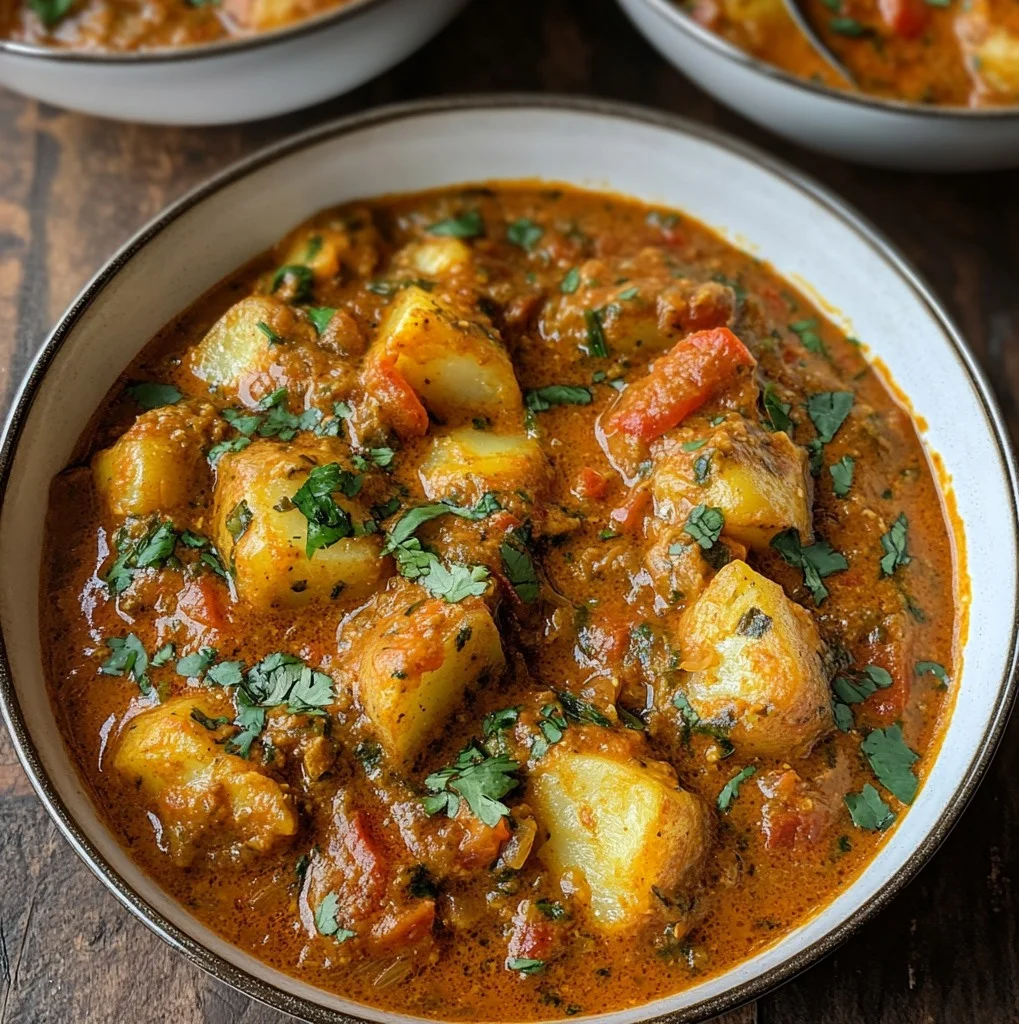ADVERTISEMENT
Sauté aromatics:
Start by setting your Instant Pot to sauté mode. Once it’s heated, add a splash of water (or oil if preferred) and toss in the chopped onions, minced garlic, and ginger paste. Stir and cook for about 2-3 minutes until the onions turn translucent and the garlic becomes fragrant.
Toast the spices:
Add in your curry powder, ground cumin, coriander, turmeric, and chili powder. Stir continuously for about 1 minute, allowing the spices to toast and release their full flavor. This step is crucial in deepening the flavor of your curry.
Add tomatoes:
Stir in the diced tomatoes. Cook for another 2-3 minutes, allowing the tomatoes to break down and create a rich base for the curry. The natural acidity of the tomatoes helps balance the creaminess of the coconut milk that will be added later.
Layer in the vegetables:
Cancel the sauté mode. Now add the cubed potatoes, chopped bell peppers, carrots, and chickpeas to the Instant Pot. This variety of vegetables provides texture and nutrients, turning this curry into a wholesome meal.
Add liquids:
Pour in the coconut milk and vegetable broth, stirring well to combine all the ingredients. The coconut milk will lend a rich, creamy flavor to the curry while the broth ensures a smooth consistency.
Pressure cook:
Secure the Instant Pot lid, making sure the valve is set to “Sealing.” Select the “Pressure Cook” or “Manual” mode and cook on high pressure for 8 minutes. This short cooking time is enough to make the vegetables tender without turning them to mush.
Release pressure:
After the cooking time is complete, allow for a natural pressure release for 5 minutes to let the pressure come down gradually. Then, perform a quick release by turning the valve to “Venting” carefully.
Adjust consistency and seasonings:
Open the lid and give the curry a good stir. If the curry is too thick for your liking, add extra vegetable broth or water until the desired consistency is reached. Season with salt and pepper to taste, then squeeze the juice of one lime for a fresh, tangy finish.
Serve and garnish:
Ladle the curry into bowls and garnish with fresh cilantro leaves. This curry pairs beautifully with basmati rice, fluffy quinoa, or a side of warm naan bread for a complete meal.
Additional Tips:
Customizations: You can easily switch out the vegetables based on what you have on hand. Try adding spinach, cauliflower, or zucchini for a seasonal variation.
Spice Level: Adjust the chili powder based on your heat preference. You can also add red pepper flakes or fresh chilies if you like extra heat.
Coconut Milk: If you prefer a lighter curry, use light coconut milk instead of full-fat. However, full-fat coconut milk provides a richer texture.
Storage: Leftovers can be stored in an airtight container in the refrigerator for up to 3 days. The curry tends to thicken as it cools, so you may need to add a splash of broth or water when reheating.
Nutrition Information (per serving, assuming 4 servings):
Calories: 320 kcal
Total Fat: 12g
Saturated Fat: 9g
Cholesterol: 0mg
Sodium: 602mg
Total Carbohydrate: 47g
Dietary Fiber: 10g
Sugars: 8g
Protein: 9g
